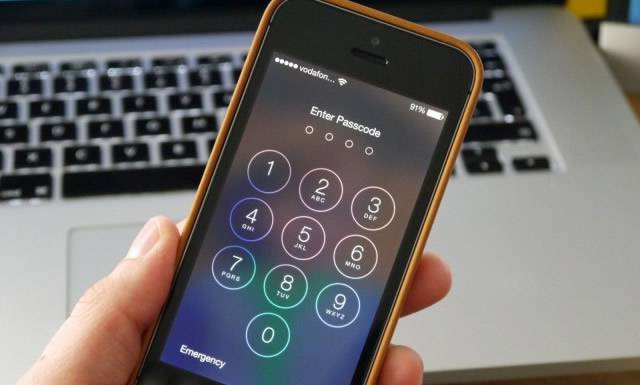Have you ever wondered how to open the iPhone Simulator on your Mac? Whether you are a developer looking to test your iOS app or simply curious about exploring the functionalities of an iPhone on your computer, opening the iPhone Simulator can be a useful tool. In this blog post, we will guide you through several methods to open the iPhone Simulator on your Mac, providing you with a step-by-step process and insights on what you need to focus on. So, let’s dive in and learn how to open the iPhone Simulator on your Mac!
Video Tutorial:
What’s Needed
Before we begin, there are a few prerequisites to open the iPhone Simulator on your Mac. Firstly, ensure that you have Xcode installed on your Mac. Xcode is the integrated development environment for macOS, containing the iOS Simulator that allows you to emulate various devices, including iPhones. You can download Xcode for free from the Mac App Store. Once you have Xcode installed, make sure to update it to the latest version to ensure compatibility with your macOS.
What Requires Your Focus?
When opening the iPhone Simulator on your Mac, there are a few key aspects that you need to focus on. Firstly, it is essential to select the appropriate iOS version and iPhone model to emulate. Different iOS versions may have distinct features and compatibility, so choose the one that matches your requirements. Additionally, selecting the right iPhone model will ensure that the simulated experience closely resembles using an actual iPhone. Finally, pay attention to the simulator’s settings and configurations, which can enhance your testing and exploration experience.
Method 1: Using Xcode
Using Xcode is the most straightforward and official method to open the iPhone Simulator on your Mac. Follow these steps to get started:
Step 1: Launch Xcode on your Mac. You can find it in the Applications folder or search for it using Spotlight (Cmd + Space).
Step 2: Once Xcode is open, navigate to the Xcode menu at the top left of your screen. From the dropdown menu, select “Open Developer Tool” and then choose “Simulator”. This will open the iOS Simulator.
Step 3: In the iOS Simulator, click on the “Hardware” menu and select “Device”. Here, you can choose the iPhone model you want to simulate.
Step 4: After selecting the iPhone model, go to the “Hardware” menu again, select “Device” once more, and this time choose “iOS Version”. Pick the iOS version you want to simulate.
That’s it! You have successfully opened the iPhone Simulator on your Mac using Xcode.
| Pros | Cons |
|---|---|
| 1. Official and reliable method provided by Apple. | 1. Requires downloading and installing Xcode, which is a large file. |
| 2. Allows simulation of various iPhone models and iOS versions. | 2. Can be resource-intensive and slow on older Macs. |
| 3. Provides access to advanced debugging and testing features. | 3. Limited to Mac users only. |
Method 2: Via Terminal
If you prefer using Terminal commands to open the iPhone Simulator, you can follow this method:
Step 1: Launch Terminal on your Mac. You can find it in the Utilities folder within the Applications folder or by using Spotlight (Cmd + Space).
Step 2: In the Terminal window, enter the following command:
“`
open -a Simulator
“`
Press the Enter key, and the iOS Simulator will open.
Step 3: Similar to Method 1, you can now select the desired iPhone model and iOS version for simulation from within the iOS Simulator.
Using Terminal is a quicker way to open the iPhone Simulator, especially if you are comfortable with command-line interfaces.
| Pros | Cons |
|---|---|
| 1. Quick and straightforward method using Terminal commands. | 1. Limited to Mac users with familiarity in using Terminal. |
| 2. Avoids the need to launch Xcode and navigate through menus. | 2. May lack advanced debugging and testing features available in Xcode. |
| 3. Ideal for developers or tech-savvy individuals accustomed to command-line interfaces. | 3. Requires knowledge of the appropriate Terminal command. |
Method 3: Using Third-Party Software
Apart from Xcode and Terminal, there are third-party software options available for opening the iPhone Simulator on your Mac. These software tools provide alternative methods to emulate iOS devices. Here is an example of one such tool:
Step 1: Download and install a third-party iOS simulator software like “Appetize.io” or “Smartface” on your Mac.
Step 2: Launch the third-party software and follow the on-screen instructions to create an account or sign in.
Step 3: Once you are signed in, you can access and open the iPhone Simulator through the software’s interface. Select the desired iPhone model and iOS version to begin the simulation.
Using third-party software can offer additional features and flexibility beyond the official Apple methods. However, be cautious when downloading and installing third-party software, ensuring that it is from a reputable source.
| Pros | Cons |
|---|---|
| 1. Alternative method if Xcode is not available or desired. | 1. Requires downloading and installing third-party software. |
| 2. Can provide additional features and customization options. | 2. Dependence on third-party developers for updates and support. |
| 3. Ideal for individuals looking for more flexibility or specific requirements. | 3. May require payment for the use of premium features. |
Method 4: Emulator Programs
Lastly, if you prefer a comprehensive emulator solution that not only includes the iPhone Simulator but also emulates other devices and operating systems, consider using emulator programs like “VirtualBox” or “VMware Fusion”.
Step 1: Download and install an emulator program like “VirtualBox” or “VMware Fusion” on your Mac.
Step 2: Open the emulator program and create a new virtual machine.
Step 3: Follow the setup wizard to configure the virtual machine parameters, such as the operating system, disk space, and memory allocation.
Step 4: Once the virtual machine is set up, you can install macOS on it.
Step 5: After installing macOS on the virtual machine, launch Safari or any other web browser within the virtual machine and visit the official Apple website to download and install Xcode.
Step 6: With Xcode installed on the virtual machine, you can follow Method 1 to open the iPhone Simulator.
Using emulator programs allows you to simulate various devices and operating systems, making it useful not only for testing iOS apps but also for exploring different platforms.
| Pros | Cons |
|---|---|
| 1. Comprehensive emulator solution for simulating multiple devices and operating systems. | 1. Requires downloading and installing an emulator program and setting up a virtual machine. |
| 2. Provides the ability to test across different platforms without additional hardware. | 2. May be resource-intensive and demanding on your Mac’s performance. |
| 3. Useful for developers and testers who need to support different platforms. | 3. Requires knowledge of setting up virtual machines and installing operating systems. |
Why Can’t I Open the iPhone Simulator?
There can be a few reasons why you might run into difficulties opening the iPhone Simulator on your Mac. Here are a few possible reasons and their fixes:
1. Incompatible macOS version: Ensure that you are running a compatible version of macOS that supports the iPhone Simulator. Check the system requirements of Xcode and the iOS Simulator to verify compatibility.
2. Outdated Xcode version: Update your Xcode to the latest version available. Older versions of Xcode may lack support for newer iOS versions or iPhone models.
3. Insufficient system resources: The iPhone Simulator can be resource-intensive, particularly if you are running it on an older Mac or with limited RAM. Close any unnecessary apps and allocate more resources to Xcode or the emulator program if possible.
By addressing these common issues, you should be able to overcome any obstacles preventing you from opening the iPhone Simulator.
Implications and Recommendations
After learning how to open the iPhone Simulator on your Mac, here are three recommendations to enhance your experience and maximize its potential:
1. Explore different iOS versions: Take advantage of the iPhone Simulator’s ability to simulate various iOS versions to test your app’s compatibility and functionality across different platforms.
2. Utilize debugging tools: Xcode and the iOS Simulator offer powerful debugging tools that can help you identify and fix issues in your app. Familiarize yourself with these tools to streamline your development process.
3. Test on multiple iPhone models: Since users may have different iPhone models with varying screen sizes and capabilities, it is crucial to test your app on different devices within the iPhone Simulator to ensure a consistent experience for all users.
5 FAQs about Opening the iPhone Simulator on Mac
Q1: Can I open the iPhone Simulator without Xcode?
A: While the most official and reliable method involves using Xcode, you can also open the iPhone Simulator via Terminal or third-party software.
Q2: Can I interact with the iPhone Simulator using touch gestures?
A: Yes, you can interact with the iPhone Simulator on your Mac using the trackpad or mouse to simulate touch gestures, including tapping, scrolling, and swiping.
Q3: Can I simulate phone calls and messages on the iPhone Simulator?
A: Yes, it is possible to simulate phone calls and messages on the iPhone Simulator. Xcode provides features to mimic various functionalities, including incoming calls and text messages.
Q4: Are there any limitations to using the iPhone Simulator?
A: While the iPhone Simulator offers a realistic experience, it has certain limitations. It cannot fully replicate all hardware features, such as GPS or accelerometer, and may have slight variations compared to using an actual iPhone.
Q5: Can I take screenshots or record the screen within the iPhone Simulator?
A: Yes, you can capture screenshots or record the screen within the iPhone Simulator using the built-in functionalities provided within Xcode or the third-party software you are using.
Final Words
Opening the iPhone Simulator on your Mac allows you to explore and test iOS apps without needing an actual iPhone. Whether you are a developer or simply curious about the iPhone’s functionalities, the iPhone Simulator is a powerful tool that offers a simulated experience. In this blog post, we have guided you through several methods to open the iPhone Simulator, including using Xcode, Terminal, third-party software, and emulator programs. By following these methods and focusing on the recommended tips, you can make the most out of the iPhone Simulator and enhance your testing and development process. Happy simulating!{“@context”:”https://schema.org”,”@type”:”FAQPage”,”mainEntity”:[{“@type”:”Question”,”name”:” Can I open the iPhone Simulator without Xcode?”,”acceptedAnswer”:{“@type”:”Answer”,”text”:” While the most official and reliable method involves using Xcode, you can also open the iPhone Simulator via Terminal or third-party software.”}},{“@type”:”Question”,”name”:” Can I interact with the iPhone Simulator using touch gestures?”,”acceptedAnswer”:{“@type”:”Answer”,”text”:” Yes, you can interact with the iPhone Simulator on your Mac using the trackpad or mouse to simulate touch gestures, including tapping, scrolling, and swiping.”}},{“@type”:”Question”,”name”:” Can I simulate phone calls and messages on the iPhone Simulator?”,”acceptedAnswer”:{“@type”:”Answer”,”text”:” Yes, it is possible to simulate phone calls and messages on the iPhone Simulator. Xcode provides features to mimic various functionalities, including incoming calls and text messages.”}},{“@type”:”Question”,”name”:” Are there any limitations to using the iPhone Simulator?”,”acceptedAnswer”:{“@type”:”Answer”,”text”:” While the iPhone Simulator offers a realistic experience, it has certain limitations. It cannot fully replicate all hardware features, such as GPS or accelerometer, and may have slight variations compared to using an actual iPhone.”}},{“@type”:”Question”,”name”:” Can I take screenshots or record the screen within the iPhone Simulator?”,”acceptedAnswer”:{“@type”:”Answer”,”text”:” Yes, you can capture screenshots or record the screen within the iPhone Simulator using the built-in functionalities provided within Xcode or the third-party software you are using.”}}]}




